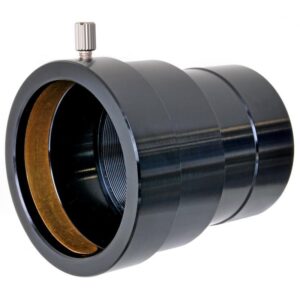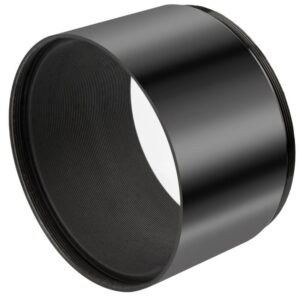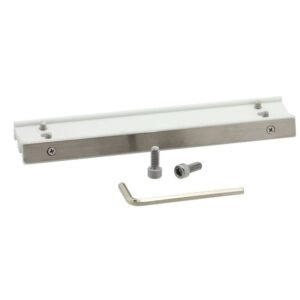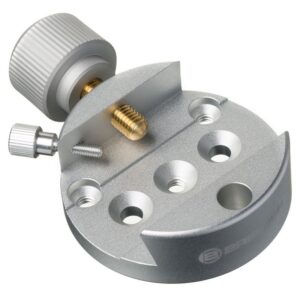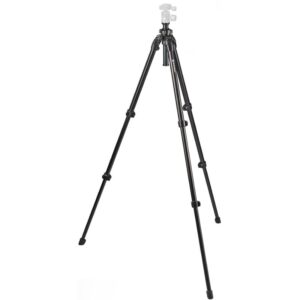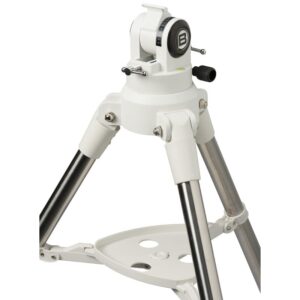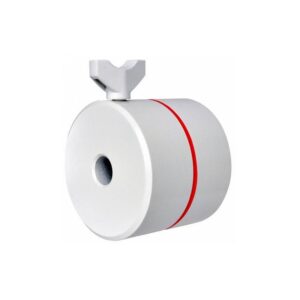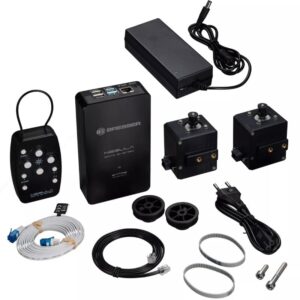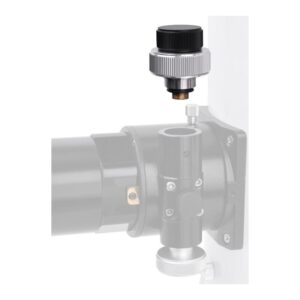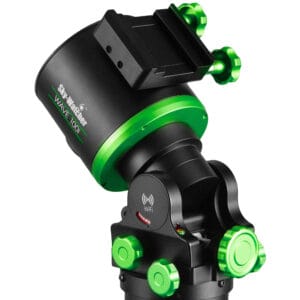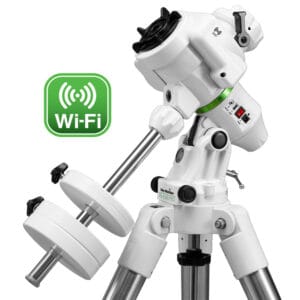Mounting & Alignment - the backbone of any telescope setup
A stable mount and accurate alignment form the basis of any successful telescope setup. Without a solid tripod, well-balanced axes and perfect collimation, even the best optics become unusable.
At Telescope.co.uk you'll find everything you need to firmly position and precisely align your telescope: from equatorial mounts and dovetail plates to laser collimators and Bathinov masks.
Why a good editing setup is indispensable
Stability: vibration and deflection lead to blurred images, especially at high magnifications or long exposures.
Precision: A properly aligned mount allows you to precisely track celestial objects - essential for astrophotography.
Flexibility: with modular dovetail systems you quickly change between telescopes or accessories without re-collimating.
A properly matched mounting setup not only increases comfort, but also determines the optical performance of your entire system.
Equatorial and azimuthal mounts
| Frame type | Advantages | Recommended use |
|---|---|---|
| Equatorial (EQ) | Automatically tracks celestial objects via RA/DEC axis. Accurate tracking at long exposures. | Astrophotography and deep-sky observations. |
| Azimuthal (AZ) | Easy to operate, quick to set up, ideal for beginners. | Visual observation and mobile use. |
EQ frames are often motorizable and have GoTo functions to automatically find and track celestial objects.
AZ frames are light, intuitive and excellent for quick observations from the garden or while traveling.
Dovetail hardware & adapter plates
A reliable coupling between telescope and mount prevents backlash and ensures consistent balance.
Vixen and Losmandy profiles are the two most widely used standards - widely compatible with telescopes and accessories.
Adapter plates make it easy to combine different dovetail profiles or mount multiple instruments on one tripod.
CNC machined clamps and plus plates minimize backlash and allow quick mounting or changing of instruments.
Collimation tools for perfect optics
The sharpest images occur with a correctly collimated telescope. The right tools make this quick and reliable:
Laser collimators For direct, visual alignment of Newton and Schmidt-Cassegrain systems.
Cheshire eyepieces provide a mechanical, daylight method for accurately positioning mirrors.
Barlow-assisted techniques magnify deviations so you can correct more precisely.
Bathinov masks create a diffraction pattern around stars that allows you to adjust focus to fractions of a millimeter.
Practical tips for installation and adjustment
Use a level To set your tripod perfectly flat; this prevents skewed tracking.
Balance OTA and counterweights so that both axes move freely without tension.
Collimate in daylight - fast control saves time during night observations.
Fine focus with Bathinov mask on a star of magnitude 2-3 for maximum sharpness.
Maintenance and sustainability
Check regularly Whether dovetail clamps and mounting rings are free of play or wear.
Lubricate shafts lightly with silicone spray for smooth movement; avoid grease that attracts dust.
Save frames in a dry, dust-free case and remove counterweights after use.
A well-maintained mount will last for years and remain mechanically stable, even under heavy use.
Frequently asked questions about Mounting & Alignment
Which tripod fits my mount?
Choose a tripod with at least 1.5× the carrying capacity of the mount. Adjustable legs help with level placement.
How do I balance my telescope correctly?
Slide the counterweights until the telescope tube remains stationary in each position. Imbalance increases wear and makes tracking inaccurate.
What is the difference between Vixen and Losmandy dovetail?
Vixen is narrower and lighter - ideal for compact telescopes. Losmandy is wider and stiffer - suitable for heavier OTAs.
How do I use a laser collimator?
Place it in the focuser, point the laser at the primary mirror and adjust the screws until the reflection is perfectly centered.
Can I use an AZ mount for astrophotography?
For short exposures, yes. For long exposures, you need an equatorial mount to avoid field rotation.
How often should I perform collimation?
Check before each session, especially with Newton telescopes or after transport.
What does a polar alignment scope do?
An integrated polar finder helps with fast and accurate alignment to the pole star essential for long exposures.
Conclusion
A stable mount is the foundation of any telescope setup. Whether you observe visually or photograph, proper alignment prevents frustration and ensures sharp, flicker-free images.
At Telescope.co.uk you'll find everything for a perfectly balanced setup from equatorial mounts and tripods to dovetail hardware and professional collimation tools.
Ordered before 23:59, delivered within 48 hours, your telescope deserves a solid foundation.



